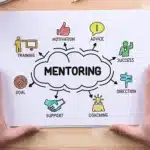As someone deeply embedded in the journey of guiding Indian students towards achieving their medical dreams in the United States, I’ve seen firsthand the common pitfalls that can derail even the most motivated aspirants.
Here, I share insights on why many Indian students fail to transition successfully into the U.S. medical system and how these challenges can be overcome.
1. Misguided Advice: The Pitfall of Inexperienced Counselors
One of the most significant barriers is the reliance on advice from those unfamiliar with the nuances of the U.S. medical education system.
Many students receive guidance from well-meaning but inexperienced advisors who are more akin to weekend hikers than Mount Everest guides.
This often leads to critical missteps—from poor USMLE preparation strategies to incorrect choices in clinical rotations and residency applications.
2. Cultural and Educational Shifts: Understanding the Core Differences
The structure of medical education in the U.S. is fundamentally different. It is a graduate program that follows an undergraduate degree, unlike the direct entry from high school seen in India.
This shift requires a deep understanding and adjustment from Indian students, who are used to a more exam-focused educational system.
Moreover, the U.S. places a significant emphasis on research, extracurricular activities, and volunteer work—areas often overlooked in the Indian context.
3. USMLE Preparation: Underestimating the Challenge
The United States Medical Licensing Examination (USMLE) is a crucial hurdle. Unfortunately, many Indian students underestimate the level of preparation required.
The USMLE tests not only your knowledge but also your ability to apply this knowledge in practical scenarios. This is a stark contrast to the rote memorization often emphasized in Indian medical schools.
4. Clinical Exposure: Bridging the Practical Experience Gap
In the U.S., clinical experience is a cornerstone of medical training, unlike in India, where practical exposure may be limited and heavily supervised.
This lack of hands-on experience places Indian students at a significant disadvantage, as U.S. medical programs highly value direct patient care experience from the outset.
5. The Importance of Networking and Mentorship
Networking is often the key to unlocking opportunities in the U.S. medical landscape.
Indian students may not realize the importance of building relationships with mentors, professors, and peers, which are crucial for opening doors to research opportunities, internships, and residencies.
6. Financial Challenges: Planning and Resource Allocation
The cost of pursuing medical education in the U.S. is substantial. Many Indian students fail to adequately plan for the expenses related to education, living, exams, and application processes.
Without proper financial planning, sustaining an extended educational journey in the U.S. becomes unfeasible.
Statistical Insight: According to a study, only about 20% of Indian IMGs who apply for the USMLE are successful in securing a residency position in the U.S. This statistic highlights the intense competitiveness and the need for impeccable preparation and guidance.
“The journey to become a U.S. doctor from an Indian background is not just a test of your medical knowledge, but a comprehensive challenge that tests your adaptability, perseverance, and resourcefulness”
Overcoming Obstacles with Strategic Planning and Support
Navigating the path to becoming a U.S. doctor requires more than just hard work and dreams. It demands strategic planning, accurate guidance, and an understanding of a complex educational and professional landscape.
At Divine, we commit to providing Indian students with the tools, knowledge, and support necessary to not only navigate these waters but to thrive within them.
For any Indian student aspiring to practice medicine in the U.S., it’s crucial to seek guidance from experienced professionals who understand both the journey and the destination.
Embrace the cultural shifts, deepen your clinical and practical exposure, and engage actively in networking to enhance your chances of success.
With the right approach and support, the dream of wearing that white coat in a U.S. hospital can indeed become a reality.
Why do many Indian students fail to become doctors in the U.S.?
Many Indian students face challenges due to inadequate preparation for USMLE, insufficient clinical exposure, poor financial planning, and a lack of effective networking and mentorship.
How important is mentorship for Indian students in U.S. medical education?
Mentorship is critical as it helps navigate the educational and cultural nuances of the U.S. medical system, offering guidance and opening doors to necessary opportunities and resources.
What are the financial considerations Indian students should be aware of?
Students must plan for significant expenses including tuition, living costs, examination fees, and application processes, often requiring comprehensive financial planning and resources.














